Listing popular specialists:

Dr. (Col.) Manjinder Singh Sandhu
Senior Consultant, 27 years of experience

Cardiology and Cardio-thoracic Surgery, Primary angioplasty, Complex Coronary Interventions, Rotational Atherectomy, Transradial Interventions, Peripheral Interventions including Carotid & Renal, Device Closure of Congenital Heart Defects, Pacemakers, ICD’s , Cardiac Resynchronisation Therapy Implants

Senior Consultant, 25 years of experience

Cardiology, Complex Coronary Interventions, Transradial Interventions, Peripheral Interventions, Pacemakers, ICD’s Cardiac Resynchronisation Therapy Implants, Balloon Valvuloplasty
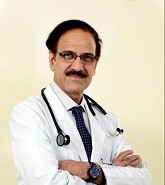
HOD, 39 years of experience

Heart Attacks, Angioplasty, Stenting, Device Implantation, Adult Congenital Birth Defects, Endovascular Interventions

Consultant, 38 years of experience

Cardiology, Angioplasty techniques Directional Atherectomy, Angioscopy, Stents, Thrombectomy devices and Drug Eluting Stents, Use of Impella heart support device failing heart, Bioabsorbable Stents and TAVI
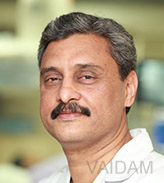
Consultant, 27 years of experience

Interventional Cardiology, Carotid Stenting, IVC Filter Placement, Peripheral Vascular Stenting, Venous Interventions

Chairman, 30 years of experience

Coronary Artery Disease (CAD), Heart Valve Disease, Aortic Aneurysm, Aortic Aneurysm Repair, Coronary Angioplasty & Stenting, Coronary Artery Bypass Grafting (CABG), Heart Failure, Heart Transplant, Heart Valve Repair, Heart Valve Replacement, Peripheral vascular disease, Stenting, Angioplasty
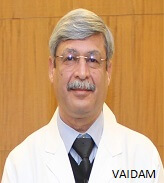
Consultant, 26 years of experience

Cardiology, Rotational Atherectomy (Rotablation), Pacemaker and AICD implantations and Cardiac Resynchronisation Therapy and Renal
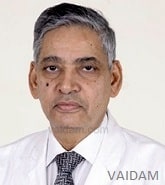
Chairman, 41 years of experience

Implantable Cardioverter & Defibrillator (ICD) Therapy, Radiofrequency Ablation, Cardiac Arrhythmia, Cardiac Resynchronization Therapy, Dyslipidemia, Non-Invasive Cardiology
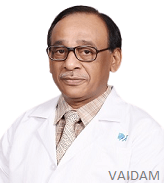
Senior Resident, 36 years of experience

Balloon Dilation of Mitral Valve and Pulmonary Valve, Coarctation of Aorta, Renal and Peripheral Arteries, Temporary and Permanent Pacemaker Implantations, Valvoplasty, Atrial Fibrillation

Director, 37 years of experience

Interventional Cardiology, Cardiothoracic Surgery, Cardiovascular Surgery, Electrophysiology

Principal Consultant, 17 years of experience

Cardiology, Electrophysiology

Consultant, 40 years of experience

Open Heart Surgery, Aortic Anuerysm Surgery/Endovascular Repair, PCI (Percutaneous Coronary Interventions), Vascular Surgery, Mitral/Heart Valve Replacement

Consultant, 30 years of experience

Cardiology

Consultant, 38 years of experience

Chest Pain Treatment Clinical Cardiology Heart Conditions Angiogram Angioplasty and Stenting Minimally Invasive Cardiac Surgery Non-Invasive Cardiology Treatment for Cardioversion

Director, 52 years of experience

Coronary Artery Disease (CAD) Heart Valve Disease Aortic Aneurysm Aortic Aneurysm Repair Coronary Angioplasty & Stenting Coronary Artery Bypass Grafting (CABG) Heart Failure Heart Transplant Heart Valve Repair Heart Valve Replacement Peripheral vascular disease Stenting Angioplasty
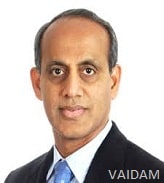
Consultant, 31 years of experience

Cardiac Catheterisation Mitral/Heart Valve Replacement Vascular Surgery Invasive Cardiac Cardiac Pacing Intra - Arterial Thrombolysis Balloon Mitral Valvuloplasty Radial Approach Angiography Patent Ductus Artriosus Device Closure Mitral/Heart Valve Replacement Invasive Cardiac Cardiac Pacing Pediatric cardiac surgery Aorta Adult Cardiac Surgery Abdominal Aorta Infrarenal Abdominal Aorta Suprarenal Aortic Arch Aortic Root Ascending Aorta Descending Thoracic Aorta Thoracic Aorta Thoracoabdominal Aortic Surgery Aortoiliac Disease Abdominal Aorta Intensive Care Ventilator

Senior Consultant, 31 years of experience

Primary angioplasty Permanent Pacemaker Implantation CRT for Heart Failure Peripheral Angioplasty Renal Angioplasty Stent Graft (for aneurysm) FFR IVC filter implantation Heart transplantation

Consultant, 44 years of experience

Peripheral Vascular Disease Patent Ductus Artriosus Device Closure Coronary Angiogram Radial Approach Angiography Balloon Mitral Valvuloplasty Pacemaker Implantation Cardiac Catheterisation Acute Aortic Dissection Primary Angioplasty ASD / VSD Device Closure Implantable Cardioverter-Defibrillators (Icds) Cardioversion Carotid Angioplasty And Stenting Peripheral Angioplasty Coronary Angioplasty / Bypass Surgery

Consultant, 37 years of experience

Implantable Cardioverter Defibrillator Transesophageal Echocardiogram Permanent Pacemaker Balloon Mitral Valvotomy Arrhythmia Treatments TAVI Coronary Angiogram Primary Angioplasty Permanent Pacemaker Cardiac Resynchronization Therapy Micra Insertion Heart failure therapies like Impella IABP TAVI. PBMV & Structural Interventions ASD VSP PDA Device closures Endovascular interventions like Aaneurysm Repair Angioplasty and /Stenting Right and Left Heart catheterization Transcatheter Aortic Valve Replacement (TAVR) Angioplasty Device Closure Endovascular Stent Grafting Peripheral Angiogram/ Angioplasty Carotid Stenting

Consultant, 17 years of experience

ASD Device Closure Pacemaker Implantation Implantable Cardioverter-Defibrillators (Icds) Radial Approach Angiography Balloon Mitral Valvuloplasty Cardioversion Angioplasty Cardiac Catheterisation Carotid Angioplasty And Stenting Chest pain Interventional Cardiology Angiogram
Possible complications after TAVI may include vascular injuries, bleeding, stroke, atrioventricular conduction system injuries, Aortic regurgitation, etc.
Our Services for Tavi in India
Transparent - Professional - Without Hassles
TAVI stands for Transcatheter Aortic Valve Implantation it is used in helping to improve a damaged aortic valve.
No, TAVI is not a major surgery it is less invasive surgery which is being designed to replace a diseased aortic valve.
Patient who is having severe symptomatic aortic stenosis are at high risk for conventional surgical aortic valave replacement.
Even though the success rate of TAVI is high it has only got few complications, some of the risks of the procedure includes bleeding, injuries, stroke, atrioventricular conduction, system injuries and aortic regurgitation.
TAVI is not recommended for those who have severe aortic stenosis , TAVI surgery will not be beneficial to them but they can definitely get benefit from TAVR surgery.
TAVI is not recommended if you have got any problem with your aortic valve and you are high risk for undergoing an open heart surgery. The aortic valve is one of the four main valves present in your heart.
The surgery is done under local anaesthesia and it will take around one to two hours to do the surgery in some cases it can also be done under general anaesthesia depending on the best solution for you.
In this procedure a catheter is being inserted in your blood vessels and then it is passed in your aortic valve and the catheter is used to guide and fix the replaced valve one above the other.
You will be in hospital for one to five days after the surgery initially you will be under close observation but when the doctor feel you are fit to go home then they can send you home.
TAVI procedure will take around three hours to complete and it is performed under local or general anaesthesia.
Recovery rate of the people is different depending on their health and the type of heart valve procedure. You will need around six to ten weeks to recover completely after the procedure. You have to do daily activities and exercises during your recovery.
There is no definite data which can tell how long your TAVI, according to recent data the age of TAVI lasts upto 20 years.
You may feel umcomfortable after the procedure but it will go off in few days and you will be also given painkillers.
You will be under observation for one or two days after the procedure, your cardiologist will come every day to check you. Your wound site will be monitored by your team during this time.






NABH Certified Healthcare Discovery Platform
Vaidam is NABH certified healthcare discovery platform that will connect you to top-notch medical experts, hospitals, wellness options, and trusted travel partners to help identify and make the right healthcare choices.

Researched & Personalized Treatment Plan - Under One Roof
You can search for the best hospitals, read about them, view photographs of the facilities at the hospitals and the places at which the hospitals are located, and check the cost of treatment.

Quality Treatment Within Your Budget
As soon as you post an enquiry, the patient relation team will collect details from you, share them with the doctors and hospitals on Vaidam's panel, and get a personalized treatment plan. We research to get quality treatment within your budget.

Treatment to Travel
Vaidam concierge assists patients, to get medical Visa, the best airline fares and arrangements for your stay. Our concierge also helps you with daily travel, language, and food concerns. Vaidam does everything to be your perfect host. All of Vaidam’s services are free of cost to patients.

International Reach
Vaidam Health has network in 15+ countries, which includes India, Turkey, UAE, Germany, South Korea, Thailand, Malaysia, Spain.
Note: Vaidam Health does not provide medical advice, diagnosis or treatment. The services and information offered on www.vaidam.com are intended solely for informational purposes and cannot replace the professional consultation or treatment by a physician. Vaidam Health discourages copying, cloning of its webpages and its content and it will follow the legal procedures to protect its intellectual property